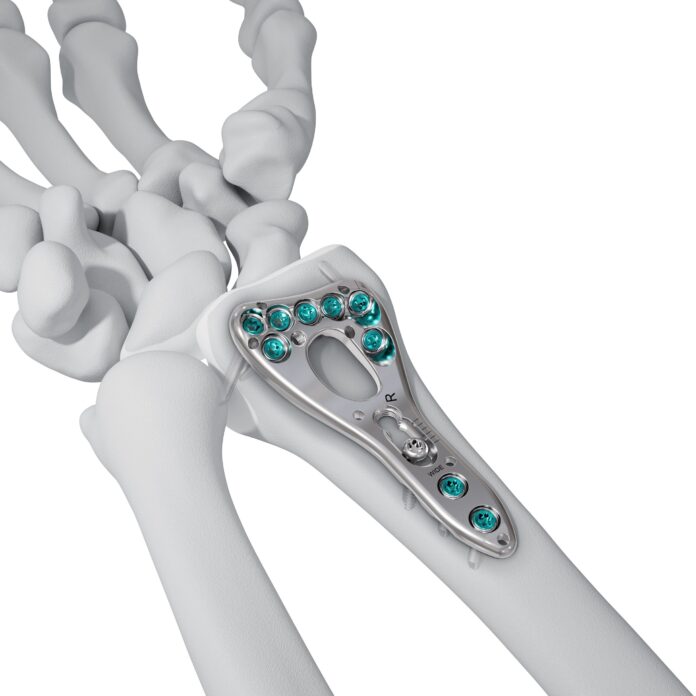WEST CHESTER, Pa– Johnson & Johnson MedTech has expanded its VOLT™ orthopaedic platform with the U.S. launch of two new plating systems designed for treating fractures in two of the most commonly injured bones—the distal radius (wrist) and the proximal humerus (shoulder). These additions mark a significant step in addressing upper extremity trauma with tools engineered to improve stability, enhance surgical efficiency, and reduce soft tissue irritation.
The newly released VOLT™ Distal Radius Plating System and VOLT™ Proximal Humerus 3.5 Plating System are built upon the Variable Angle Optimized Locking Technology first introduced in the VOLT™ platform in 2024. Both systems feature precision-threaded locking screw technology and anatomically contoured plates designed in collaboration with global surgical experts.
“These are two of the most frequent fractures we see in clinical practice, particularly in older adults,” said Aldo Denti, Company Group Chairman, Orthopaedics, Johnson & Johnson MedTech. “These new systems reflect both technical innovation and a surgeon-first design philosophy, allowing for better outcomes with fewer complications.”
Fracture Innovation for Aging Populations
Wrist fractures alone account for nearly 20% of all emergency room fracture cases and are the most common upper limb injury. Shoulder-related proximal humerus fractures are also prevalent, particularly among aging patients, representing the third most common type of fragility fracture.
The VOLT™ Wrist Treatment System, developed in conjunction with the Hand Expert Group of the AO Technical Commission, includes the Two-Column Distal Radius Rim Plate. This design allows the plate to sit farther down the wrist for improved control of distal bone fragments, while its slimmer profile reduces interference with soft tissues like the flexor pollicis longus tendon.
Dr. Amy Speeckaert, a hand and upper extremity surgeon, praised the system’s ergonomic and low-profile design: “The new plate sits more distally and has tapered edges that help reduce irritation. The hooks also provide excellent stability by anchoring to the volar lip—where ligaments meet bone—which is key in complex fracture repair.”
Expanding Options for Complex Shoulder Fractures
The VOLT™ Proximal Humerus 3.5 Plating System brings similar innovation to upper arm fractures. With more plate lengths, redesigned suture holes for simplified ligament repair, and the same variable angle locking capabilities, the system offers enhanced versatility for trauma surgeons.
“The shoulder system provides a new level of customization and ease for proximal humerus fractures,” said Dr. Harry Hoyen, a member of the AO Technical Commission’s Shoulder and Elbow Task Force. “The ability to tailor the approach for each patient’s anatomy is a game changer.”
Designed for Today’s Surgeons and Patients
Both new systems integrate seamlessly with the VOLT™ Mini Fragment System, providing a broader implant selection and unified instrumentation. The plating systems are now commercially available in the U.S., with Johnson & Johnson MedTech planning to roll out additional anatomic plating solutions in the coming years.
This latest launch reinforces Johnson & Johnson’s role as a global leader in trauma care, driven by deep clinical partnerships and a long-standing mission to improve orthopaedic outcomes through next-generation medtech solutions.


